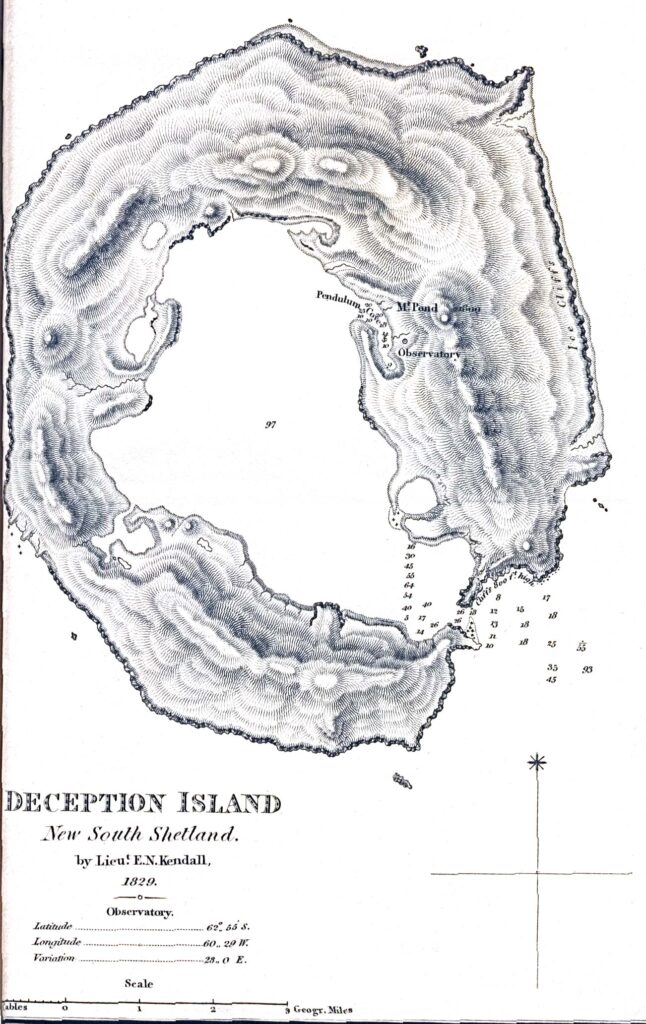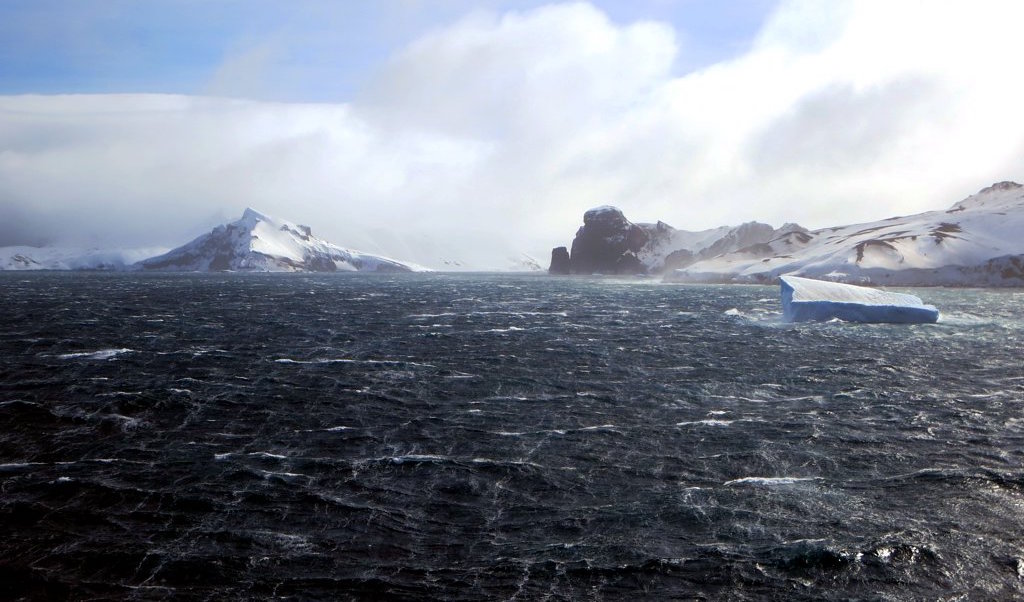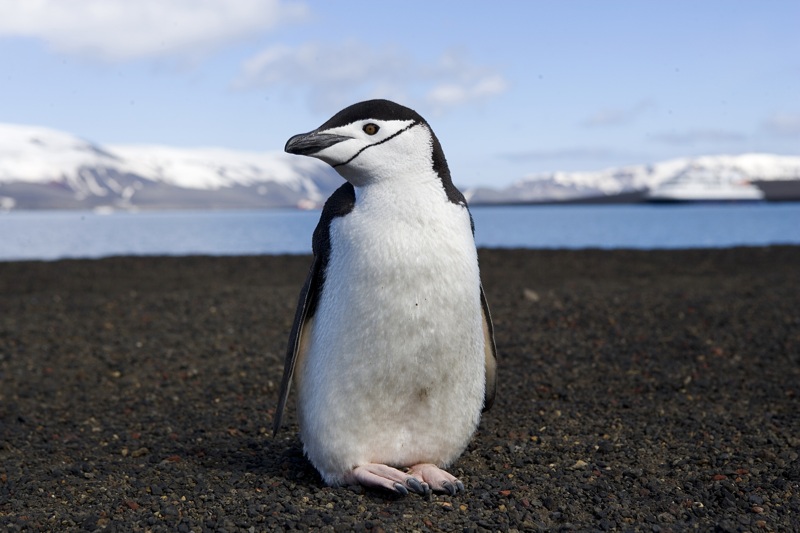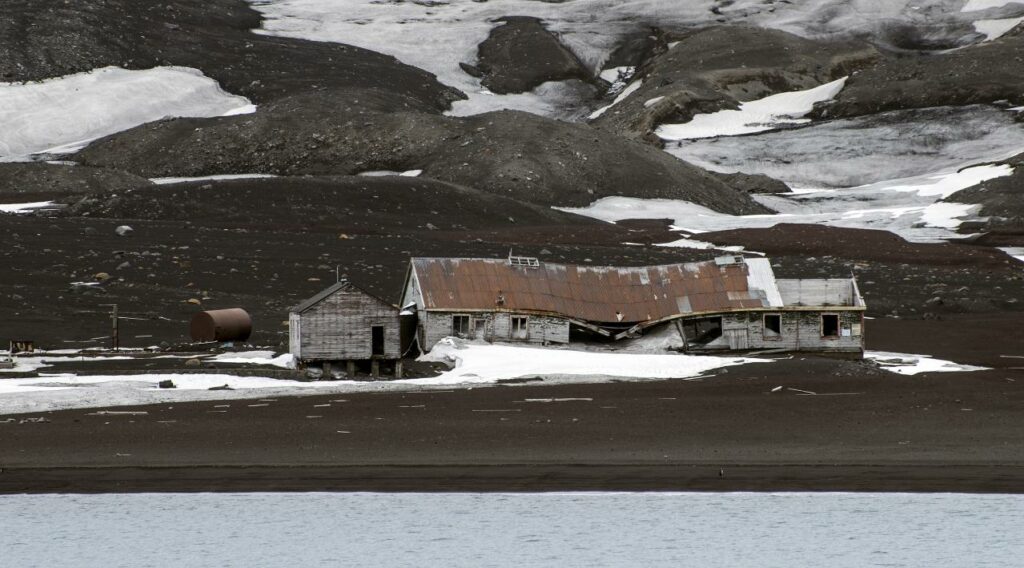The high black walls of Deception island rise above the storm-tossed waters off the Antarctic peninsula. It’s a volcano, its rim broken in a single spot, permitting ships to sail into the flooded caldera. Its history, remote location, and strange features make Deception Island a great adventure site for RPGs!

The horseshoe-shaped island is 9 miles in diameter, with a line of peaks running its length. Many are snowcapped, and half the island is covered by glaciers. Seasonal streams run down from the mountains, feeding ponds. One, Kroner Lake, is geothermally heated. The smoke rising from scattered fumaroles demonstrate that the volcano remains active. Volcanic heat warms the black sand beaches, sending up clouds of steam at low tide. Within six feet of the sand, the normally-frigid Antarctic waters are warm enough to swim in. During periods of elevated volcanic activity, the water in the caldera will boil. Historically, sailors had to evacuate during these times, because the great heat would buckle their ships’ steel hull plates, letting boiling water flood the compartments.

Deception Island gets its name from its entrance. As you round the island, it looks solid, until you see a narrow gap in the mountains. Sailors call the strait Neptune’s Bellows for the way water rushes through the confined space during the area’s frequent storms. Dark, high-walled cliffs tower over the strait on one side. On the other, a snowcapped slope runs down to the sea. Worse, a submerged rock lurks in the center of Neptune’s Bellows, waiting to tear out the bottoms of ships piloted by unwary mariners.

The island is home to several colonies of penguins and other oceangoing birds. For a few months a year, the outer shore of Deception Island becomes a moving landscape as 100,000 chinstrap penguins descend upon its black sand to breed and raise their chicks. At other times, elephant seals haul out along the beaches for the same purpose.

Humans first arrived here around 1820. Almost immediately, the island became a base for sealers and whalers. They’d drag whales back to the island to butcher them for their fat, then render the fat into profitable tallow. The abandoned station at Whaler’s Bay still remains, rusting in the rain. It’s a popular site for tourists. Today, Spain and Argentina maintain research stations on the caldera’s southwestern shore. Volcanic activity from 1967-1970 destroyed a Chilean station and closed a British one. When the volcano will erupt again is anyone’s guess.

With its remote location and intimidating nature, Deception Island is a great place for a secret hideout or villain’s lair. In a premodern setting, the whaler’s station could still be active – the last port of call at the edge of the world.
For adventures at Deception Island, consider setting up your plot so the objective gets harder to accomplish the more time goes by. Then, when your PCs arrive outside Neptune’s Bellows, have the tide be coming out (making it harder to enter the bay) and the wind be gusting perpendicular to the strait (making it harder to maintain a straight course). Do the PCs want to wait for the tide to turn and the weather to clear up (making their objective harder), or do they want to press on, taking the risk of being beached on the sand, bashed against the cliff, or crashing into the submerged rock?
For an additional complication, you could have the PCs’ arrival coincide with a resumption of major volcanic activity. A sudden lava flow oozes through the villain’s lair, and the water in the caldera starts to boil! How will the PCs escape?






